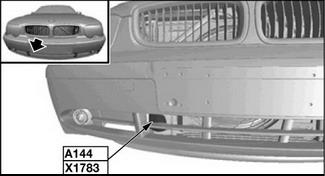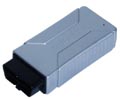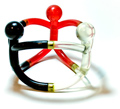- ACC system functions
- |
- ACC system
- |
- BMW Electronic Systems
- |
- Technical Info
- |
- Car Tech Info
- |
- MicroTronik
ACC system functions

A radar sensor determines the distance, angle and speed of moving objects in front of the vehicle. The driver can preselect a required speed in the range from 30 km/h to 180 km/h in steps of 10 km/h. This setting is shown in the instrument cluster. Furthermore, it is also possible to choose between three fixed time-based distance stages. This means that the distance from to the vehicle in front changes with speed.
ACC is a convenience system. This means driver interventions always have higher priority than the ACC control.
ACC provides the following functions to the driver:
Cruise control (FGR) with preset required speed, LED indication in the speedometer Cruise control with adaptation to the speed of the vehicles in front Maintaining a distance to the vehicle in front, set by the driver Avoiding distance ranges that are subject to fines Quick change of required speed in 10 km/h steps with rapid response of vehicle by way of brake intervention Specific brake intervention ensures the set speed is not exceeded even when driving downhill.
The following variables are limited for the purpose of ensuring reliable ACC operation:
· ACC operation only possible from 30 km/h to 180 km/h
· Limitation of ACC deceleration by way of brake intervention to max. 2.0 m/s2
· Limitation of ACC acceleration to max. 1.2 m/s2. This prevents coming critically close to other vehicles and limits the acceleration when cornering
· Limitation of lateral acceleration to max. 3 m/s2 for comfort reasons
· Under stationary conditions, the time gap to a vehicle in front is not less than 1 s. This time gap may be less than 1 s for a short time under certain conditions, e.g. when a vehicle cuts in closely.
· ACC should only be used under adequate visual conditions.
· The detection range of the radar sensor is limited.
· A vehicle cutting in can cause delayed responses in the ACC. For this reason, do not use ACC on winding roads or where it is necessary to change lanes frequently.
· Large speed differences, e.g. quickly approaching a heavy goods vehicle, cannot be regulated.
· Driver intervention will be necessary if the rate of deceleration of the ACC is not sufficient.
· ACC cannot be used in stop-and-go traffic. The driver must take control of the vehicle by braking at the right time.
· The ACC will no longer accelerate after intervention of the traction control systems ASC or DSC, i.e. it is necessary to switch on the system again.
· If the ACC is no longer able to maintain the selected distance, a signal is sent indicating that the driver should take control. The (object detected) lamp begins to flash.
is one of the best Professional scan tools to for BMW; Autohex allows you to diagnose, code, program/flash ecus, and add new keys for BMW. For more information: BMW Scan Tool
GDS KIA Ecu Flashing using AutoHex II


